People from all over the world come to Germany to visit some of its magnificent fairy-tale castles atop mountain peaks and with towers reaching to the sky.
Time is precious and so are your travel moments, right?
So, why not skip the lines and expensive entry fees at Neuschwanstein Castle and head to one of the abandoned and derelict castle ruins in Germany’s countryside instead? Explore the mystical beauty of little-known castles and immerse yourself in Germany’s past filled with dukes, knights, kings and battles.
For this post, I asked a bunch of fellow travel writers to share their favorite small and little-known castles in Southern Germany. And wow, what a great selection!
All of these castles, palaces and ruins make for an unforgettable and truly medieval day trip and will likely give you a much better experience than the famous German castles that are visited by thousands of tourist on a daily basis.
Be sure to read ’til the end where we’ll reveal a special tip for an ultimate castle experience in Southern Germany!
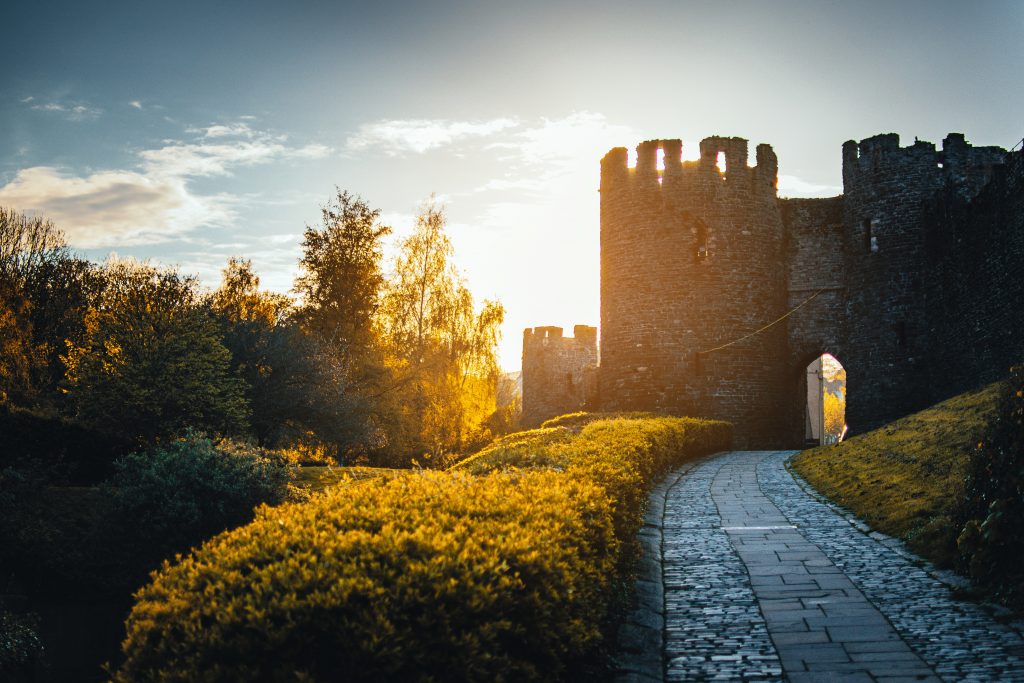
Lichtenstein Castle
By Alex from Swedish Nomad
Lichtenstein Castle is one of my favorite castles in Germany. It is known as Schloss Lichtenstein in German, and it was built in 1840-1842, close to the ruins of an old medieval castle.
The castle was actually inspired by the novel Lichtenstein, which is also how it got its name. If you were to translate it into English, it would mean “shining stone”.
For some reason, it seems that not many international tourists know about it. Locally, however, many Germans find it one of the most beautiful castles in the country.
Visitors can walk inside on a guided tour, which is quite interesting where you can see old armors, weapons, and other artifacts. The entrance fee is only 2 Euros for the garden if you don’t want to go inside on a guided tour.
The guided tour costs 8 Euro.
How To Get There: To get here I suggest renting a car, but there are also guided tours that you can book. For example from Stuttgart, which is the closest big city. There are also day trips available from Munich. But the easiest way is to get to Lichtenstein Castle by car because then you can arrive at any time you want and depart at any time you please. If you go by car, I also recommend to combine it with Tübingen, which is a beautiful university town, about 40 minutes away by car.
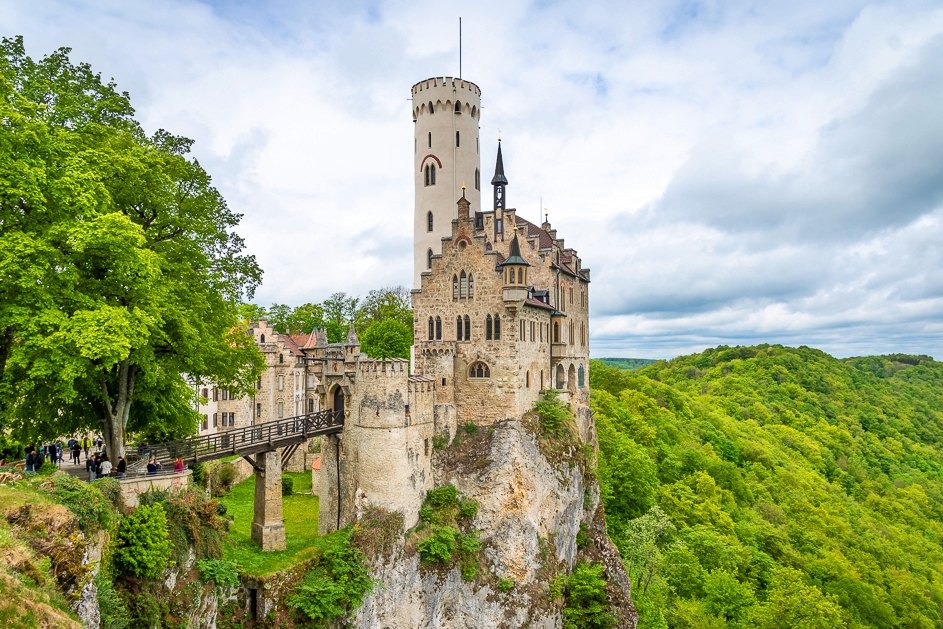
Stettenfels Castle
By Chelsea from Pack More Into Life
Stettenfels is an 11th-century castle with a varied past ranging from knights and lords to stud farmers and even ended up in the hands of the Americans after WWII when it was seized by the Nazi’s. The castle is now open to the public and features a wide variety of events, most notably a medieval festival with thousands of visitors and hundreds of vendors and participants.
The Medieval Festival takes place around May 1st and includes jousting tournaments, birds of prey demonstrations, juggling acts, acrobatics and plenty of music, food, and artisans. There is event parking with buses to the castle grounds. It is a family-friendly event and most of the vendors speak at least some English.
The beer garden is a permanent fixture and provides beautiful views over the vineyards and surrounding town. They also sell plenty of options for traditional German fare.
How To Get There: Stettenfels Castle is located 40 minutes north of Stuttgart in southern Germany. It is best reached by car because public transportation requires a 20-minute walk to reach the castle.
Want to read more about fun family-friendly festivals and locations in Europe? Head over to this Europe Guide with Kids.
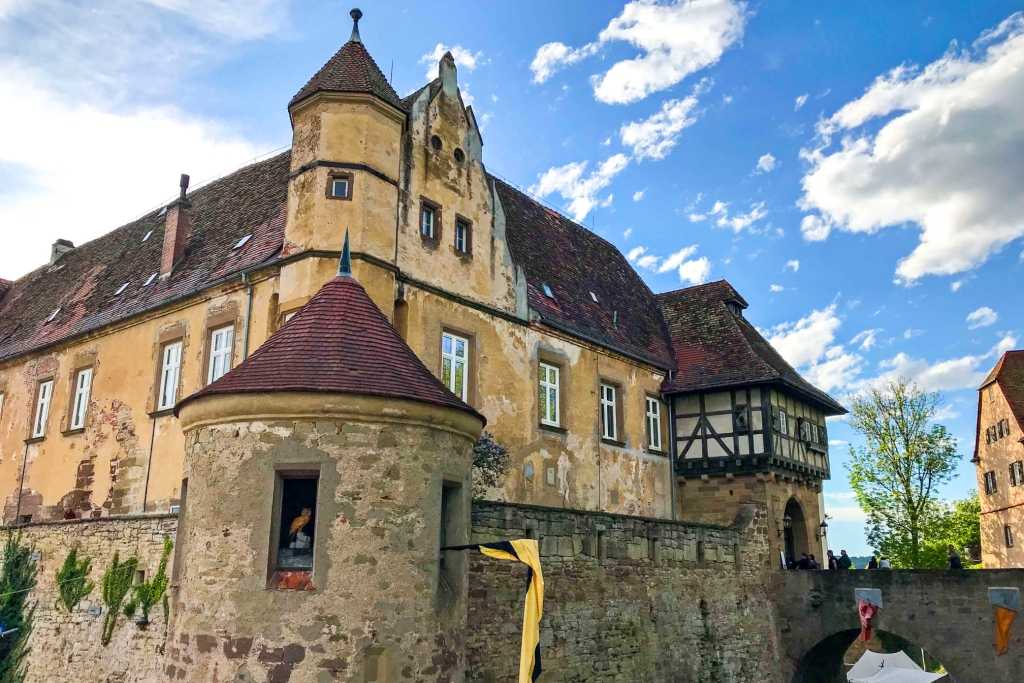
Tiefburg Castle
By Ali from Travel Made Simple
If you’re visiting the Black Forest, I highly recommend adding on a day or two in Heidelberg.
It’s a popular tourist town in Germany with a castle on the hill in the old town, and yet there is another castle that is even better.
Tiefburg (Deep Fortress in German) is in the section of Heidelberg called Handschuhsheim to the north of the river. Whereas the big castle in Heidelberg is mostly a pile of looming ruins and gardens, Tiefburg is more intact despite its 12th-century origins. It is smaller and more modest, but many of the towers and crenelations are intact. It serves as an administration and events venue for the suburb that it occupies. A deep, but dry moat sets it off from the pleasant square with a few cafes.
Unless there is a festival going on, it probably consumes only an hour or so of your afternoon, but a more intact castle with far fewer tourists is worth it.
How To Get There: Several tram lines run from the center to Hans-Thoma-Platz and the castle is a short walk from there.
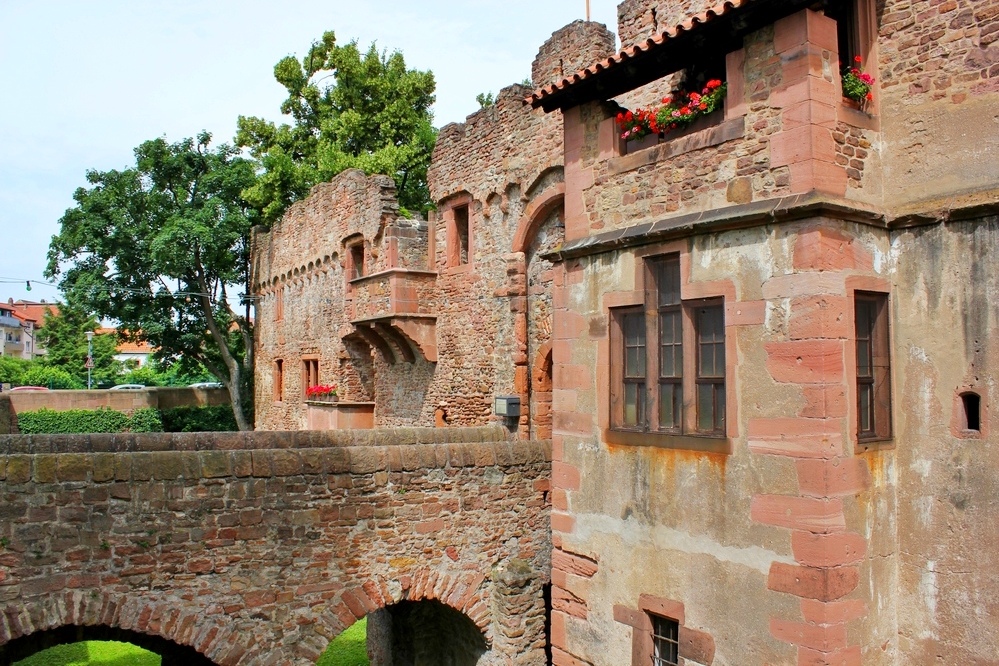
Hohenbaden Castle
By Carol from Wandering Carol
A little-known attraction in the spa town of Baden-Baden is Hohenbaden Castle. Locally known as Altes Schloss, the Old Castle, it was built by the Margraves of Baden in the early 12th century.
Sitting high above Baden-Baden on Battert Hill, these romantic ruins offer panoramic views of the Black Forest and the Rhine Valley below and can be visited for free.
Expanded over centuries, the castle had more than 100 rooms at its peak, but in 1479 the Margraves of Baden moved to the more modern Neues Schloss, the New Castle. After a devastating fire around 1599 the Old Castle was destroyed, but today it makes an atmospheric excursion from Baden-Baden.
Highlights of a visit include a large wind harp, dungeons, an onsite restaurant – and of course the views. Be forewarned though, steps can be steep and caution should be used.
How To Get There: It’s possible to hike here from town, though it can take a couple of hours, so driving is more comfortable. Parking is free and there are trails around the castle.
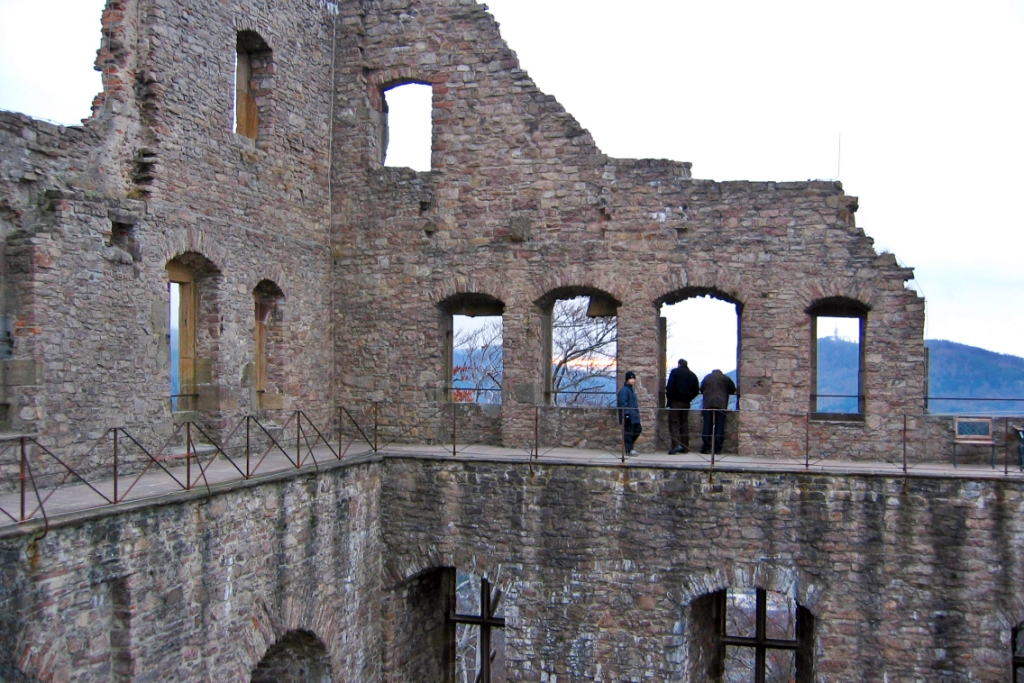
Rheinstein Castle
By Diana from The Elusive Family
Rheinstein Castle is located high on a cliff overlooking the beautiful Rhine River in the Rhineland-Palatine region of Germany. Its beauty is admired from the river, and its strategic location gives the castle a very classic look that one would imagine when thinking of medieval castles in Germany.
The castle is a maze, where numerous rooms provide an abundance of history about its time. A room dedicated to the armory that was used during that time offers a glimpse into medieval war times. Multiple ornate rooms in the castle provide for a wonderful tour and the spectacular Knight’s room offers beautiful light through the glass windows and lively paintings.
The castle has a café, restaurant and even rooms for rent. As one of the best castles to visit on the Romantic Road in Germany, a visit or even a stay at this castle provides for a truly unique experience with unparalleled views of southern Germany.
By the way, Rheinstein Castle is only one of many beautiful day trips from Stuttgart.
How To Get There: The imposing castle can be reached through a steep hike up alongside the ravine and when arriving at the top, affords magnificent views of the Rhine River below.
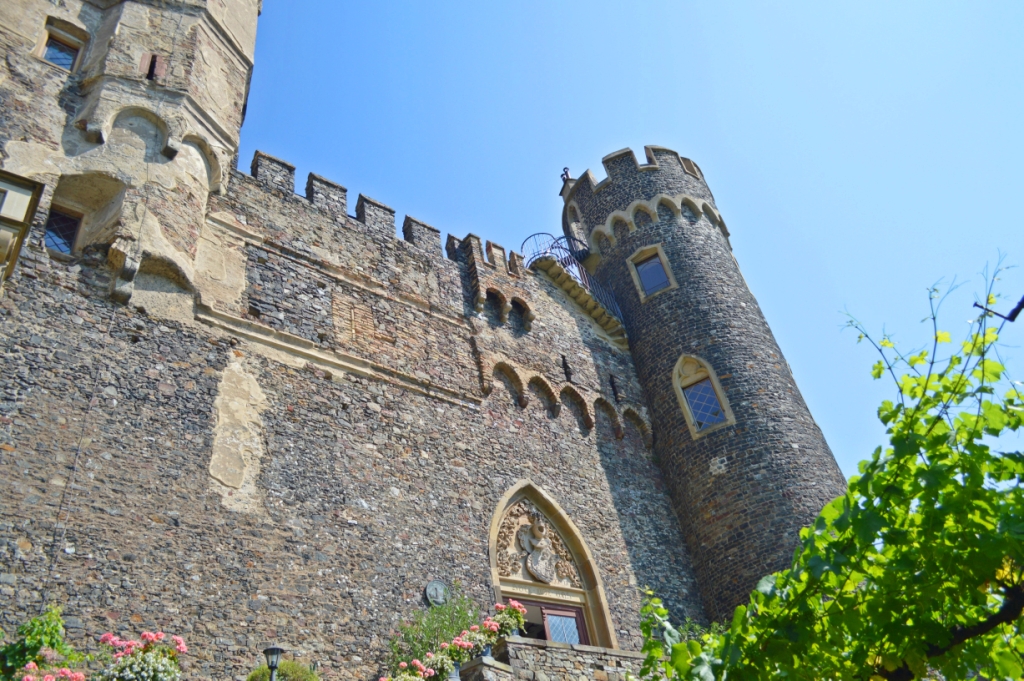
Hilpoltstein Castle
By Summer from Eat Something Go Somewhere
Approximately 30 kilometers south of Nuremberg sits the historic village of Hilpoltstein.
With its 10th-century roots and well-preserved architecture, curious explorers of Franconia are sure to enjoy a visit to Hilpoltstein’s cozy Altstadt. Overlooking the town’s cobblestoned streets and half-timbered houses are impressive castle ruins (Burgruine), which once stood in magnificence at the hands of the Lords of Stein during the 13th and 14th centuries.
Should the time of year be late summer, Hilpoltstein is especially worth a stop during the first weekend of August, when the village puts on its annual Burgfest. A four-day celebration of the castle’s storied past, residents and visitors alike can enjoy a traditional parade, flea market vendors lining the streets of the old town, special city and castle tours, and, of course, the festivities inside the official Burgfest beer tent.
How To Get There: As Hilpoltstein is easily reached by car via the A9 or through regional train and bus services, visiting the castle ruins is quite manageable as a day trip from Nuremberg.
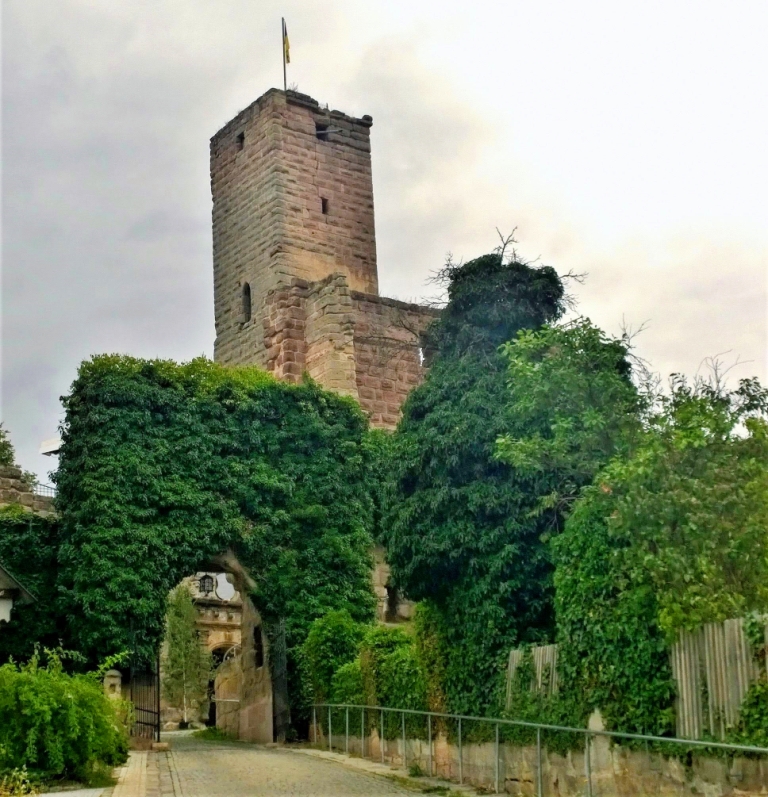
Burghausen Castle
By Rachel from Rachel’s Ruminations
It’s a mystery why Burghausen Castle isn’t better known than it is. Sitting dramatically above the Salzach River on the border with Austria, Burghausen Castle extends along a ridge of land for a kilometer, making it the longest castle in the world.
But that’s not what makes it special. This 13th-14th-century castle (with some later modifications) is charming and uncrowded.
Walking through a series of courtyards, visitors are treated to beautiful views on both sides (The town of Burghausen just below is picturesque, with its pastel-painted turn-of-the-20th-century town center). Imposing gatehouses, bridges over moats, defensive walls … this castle ticks all the boxes.
The oldest part of the castle, complete with cobbled courtyard, archways and a keep, houses a museum, but the best part is the roof. Standing above the very tip of the ridge allows a view down the entire length of the castle: a long chain of red-roofed turrets.
How To Get There: From Munich, Burghausen is a two-hour trip by car or by train, but you’ll have to change trains at Mühldorf (Oberbay). From Salzburg, it’ll take a bit more time: change in Tüßling. From the train station in Burghausen, it’s about a half hour walk to the castle entrance.
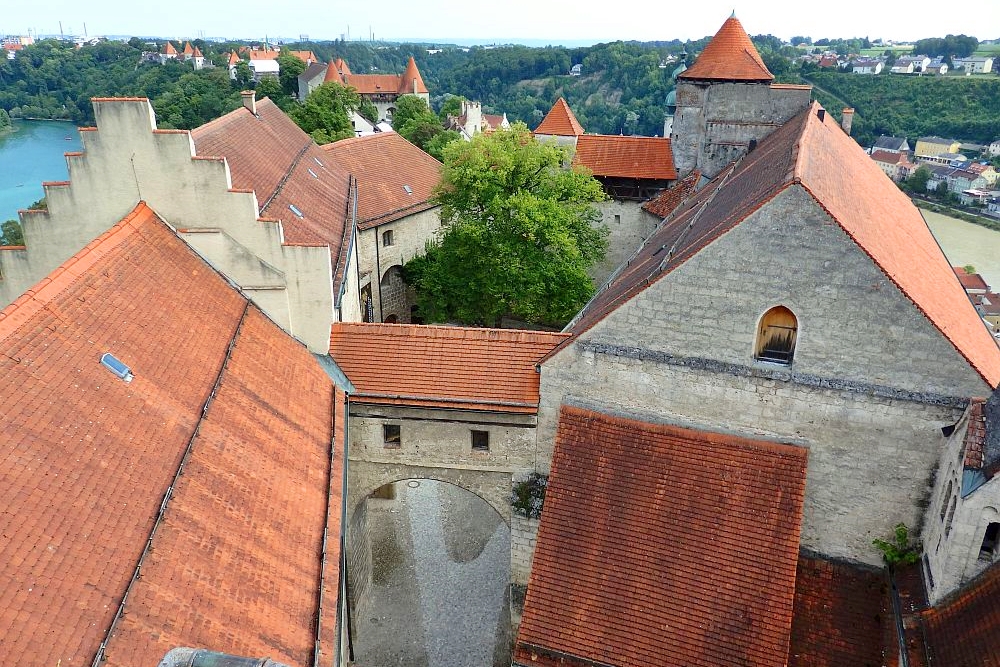
Linderhof Palace
By Linda from Travel Tyrol
King Ludwig II of Bavaria is perhaps most famous for his Neuschwanstein Castle. But it’s the much smaller Linderhof Palace (Schloss Linderhof) where he preferred to stay as a recluse. Linderhof is also the only of his castles/palaces which he lived to see completed.
“Mad” Ludwig wanted to recreate the palace and gardens of Versailles at Linderhof. The result is a “French palace” in the foothills of the Alps in the German state of Bavaria. N
o effort or money was spared, with more than 8 million Goldmark spent on the construction and decorating of Linderhof between 1863 and 1886.
Linderhof is the centerpiece of a beautiful park and gardens with several features worth seeing beside the palace. They include the Moorish Kiosk and the Venus Grotto.
How To Get There: Getting to Linderhof is easiest by car or coach tour. It’s a popular day trip from Munich or Innsbruck and can be reached in under 2 hours from both cities via the town of Oberau. If you’re relying on public transport, you can take a train to Garmisch-Partenkirchen or Oberammergau and a bus from there.
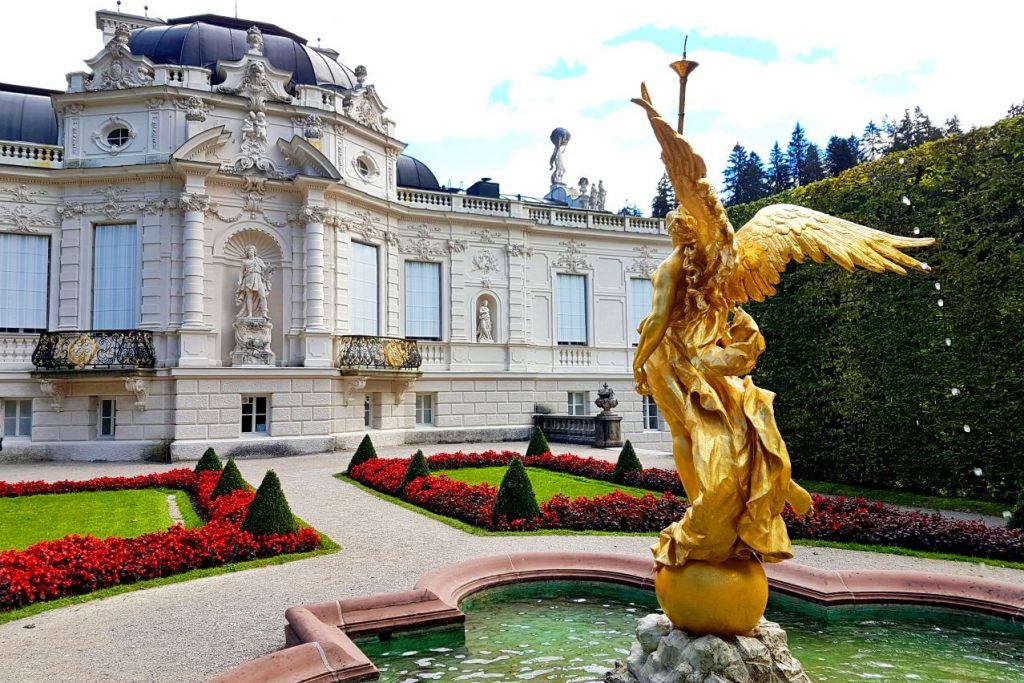
Hohenstein Castle
By Lena from Lena On The Move
On the highest point in Middle Franconia and above the Franconian village of Kirchensittenbach sits Hohenstein Castle, a gorgeous and very well-preserved medieval complex dating back to the 11th century.
The complex consist of numerous buildings, including a chapel, an assembly room, the living quarters and a castle keep, all of which are very well-preserved. The castle grounds are also home to a beautiful botanical garden with an abundance of medicinal plants and spice plants, which is included in the entry fee of 2 €.
From the top of the castle’s residential quarters as well as the viewing deck in the courtyard, you’ll have panoramic views over the Franconian Switzerland Nature Park with its extensive limestone landscape.
With only a handful of visitors on the weekends and great hiking opportunities in the beautiful nature around, I consider this castle a perfect day trip from Nuremberg.
How To Get There: The complex is only 40 km from Nuremberg and can even be reached in less than an hour by public transport. Other towns near the castle are Schnaittach and Lauf an der Pegnitz.
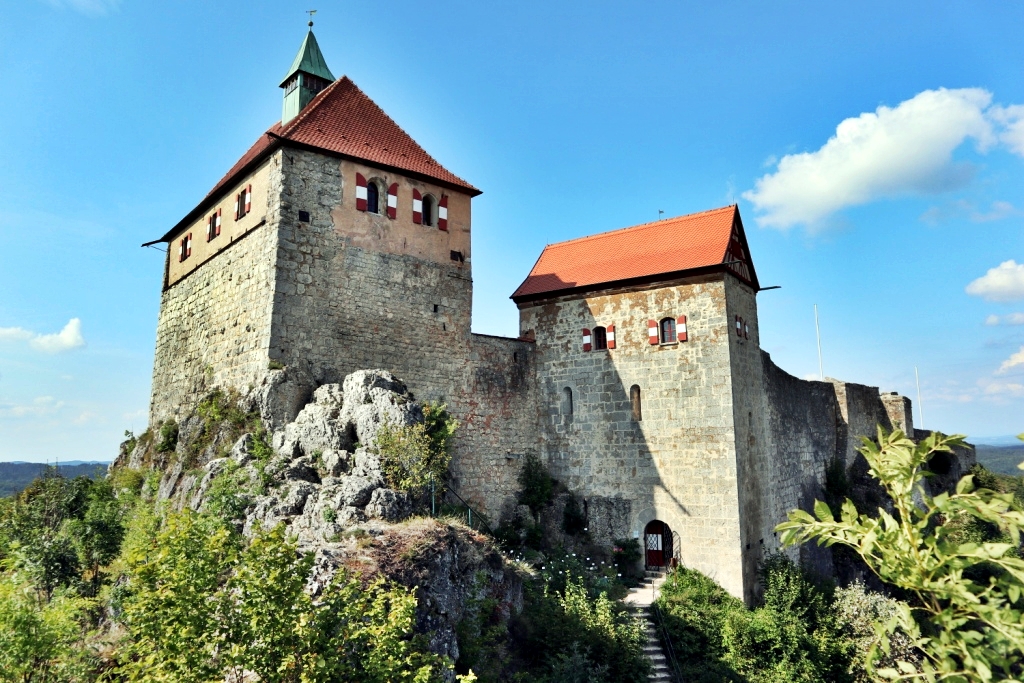
Special Tip: Ludwigsburg Palace
By Betsy from PassingThru
Located just north of Stuttgart, the Ludwigsburg Palace complex was begun in 1704 by Eberhard Louis, Duke of Wurttemberg, on the site of a traditional family hunting estate which had been destroyed in the Nine Years’ War. Eberhard Louis was inspired by the Palace of Versailles in France and decided to center his social and diplomatic efforts here in a new palace and planned town community which would house workers, artisans, servants, and courtiers. Conveniently, this decision also allowed him to set up a new court with his mistress, Wilhelmine.
Subsequent Wurttembergs abandoned the lavish complex due to its “sinful” reputation, while others modified and expanded it in accordance with the latest styles. The Palace remained a residence into the 20th century, with more than 450 rooms, a majestic theater, and other luxury entertainments. The Neuer Hauptbau (New Main south wing), which contains both the queen and king’s apartments, is currently under restoration and refurbishment, with Austrian and Czech baroque elements. French, Italian, and Rococo elements are also present. The main Palace has two museums within which feature fashions and porcelain.
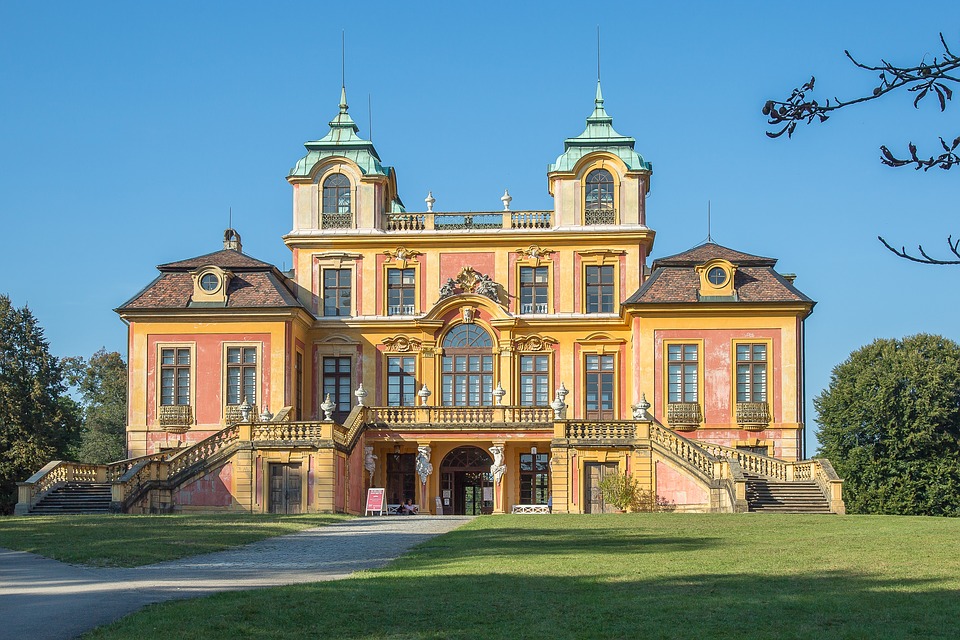
Ludwigsburg’s grounds and gardens are numerous and extensive. These were restored in the 1950s, and include the marvelous 19th-century mechanical Fairytale Garden, which was the Disneyland of its time. Other notable buildings in the complex include the rococo Schloss Favorite, built for Wilhelmine by her doting lover, and the Seeschloss Monrepos, a lakeside hunting lodge turned Empire rococo gem, which is still privately owned by the Wurttemberg family. At the Seeschloss, visitors can enjoy the man-made lake, open-air concerts and fireworks during the summer. During the Christmas holidays, Ludwigsburg’s Baroque Weinachtsmarkt is one of the most beautiful in Germany.
While it’s the largest palace and estate in Germany, Ludwigsburg is less well-known to Americans than more famous castles in Southern Germany such as Neuschwanstein and Nymphenberg. Nonetheless, it has been the site of notable events, such as musical and theatrical premieres, cultural milestones, political speeches, commemorations, and even a war crimes trial.
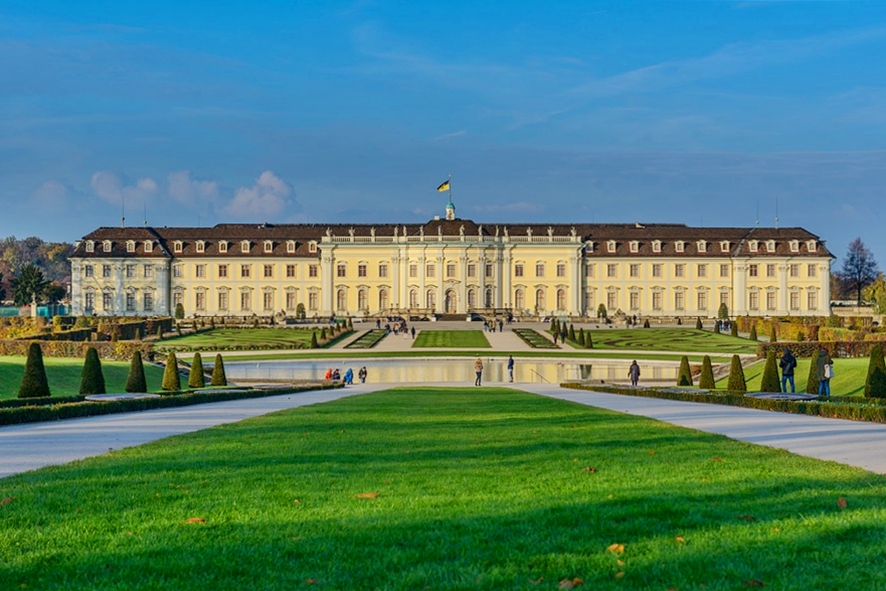
Have you visited any other little-known castle in Southern Germany?
Tell me about it in the comments or get in touch with me via e-mail or social media if you’d like to contribute to this article!
Planning A Trip To Germany?
If you’re looking for travel inspiration, beautiful nature parks, awesome photo spots, fairy-tale castles and medieval towns, these posts have got you covered:
>> Authentic Off-The-Beaten-Path German Towns You Have To Visit
>> Discover Medieval Germany In 14 Days – A Sample Itinerary
>> Ultimate Franconia Beer Guide: 12+ Unique Beers You Have To Try In Southern Germany
For more detailed travel tips, city and castle guides, check out the Germany section and make sure to sign up for e-mail updates to receive a notification once I upload a new post!



3 Responses